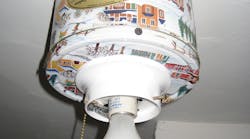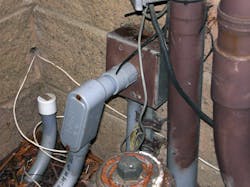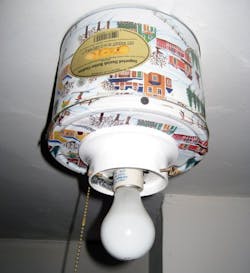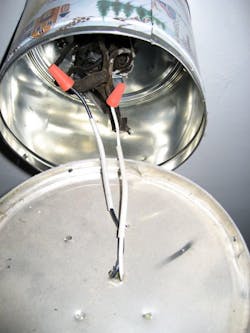Illustrated Code Catastrophes: Sections 314.22, 314.29, 410.6, 410.56(B), 410.42 and 410.74
All references are based on the 2011 edition of the NEC
Access Denied
In order to open this box, we would need to cut the PVC or perhaps dig up the underground pipe in the hopes we could get enough flex on it to remove the cover. Neither of those options changes the fact that this is a violation of 314.22, which states in part “surface extensions shall be made by mounting and mechanically securing an extension ring over the box.” There is no extension ring; however, an Exception to this rule allows a surface extension to be made from the cover of the box — if the cover is designed so it is not likely to fall off or be removed if its screws become loose.
314.22 also requires the wiring method to be “flexible for a length sufficient to permit removal of the cover and provide access to the box interior.” Rigid PVC conduit is certainly not a flexible wiring method.We could argue this also violates 314.29, which requires this box to be installed so that the wiring contained in it “can be rendered accessible without removing any part of the building or, in underground circuits, without excavating sidewalks, paving, earth, or other substance that is to be used to establish the finished grade.”
Hey, At Least It's Not a Fruitcake Tin
Luminaires and lampholders “shall be listed” in accordance with 410.6 of the NEC. I don’t think this was sent to a testing lab and approved to be listed. I also doubt that a field inspection was performed at this location.
There are also razor sharp edges and jagged metal present that could easily damage the conductor insulation. This is a violation of 410.56(B). Could the branch circuit wires overheat? They certainly could. This is a violation of 410.74.
I love cookies, especially around holiday time, but this may be one time that a fruit cake may have been the better choice — one that comes in a wrapper, not a tin can!







